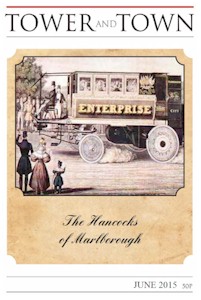

Tower and Town, June 2015 (view the full edition) (view the full edition)Thomas Hancock: The Vulcanising BrotherThomas was the second brother. Like the third brother John he had served his apprenticeship as a cabinet maker and they went into business together in London in 1816 as coach builders, rather bizarrely using whalebone as a structural material (strictly it was not bone they used but the springy baleen used in corsetry). With experience of building strong light wheeled vehicles they built and sold the 'Ladies Pilenium', which was a tricycle to afford ladies agreeable exercise, and unlike the contemporary hobby horse bicycle it had foot treadles which turned the wheels (the hobby horse was propelled by pushing the feet on the ground so only rideable by men in trousers). During this time he had been greatly impressed by William Hunter the famous 'coal heaver and sinner' preacher, and the evangelical chapel where the teaching influenced him all his life.
Having more work than he could handle Thomas gave his patent for a promising rubber ships' anti-fouling paint to brothers Walter and Charles. They being young and naive soon lost this and all their money to vulpine partners they brought into their business. Charles returned to painting and Walter stayed with the rubber business, though soon branched out into building steam carriages. In 1835 John died of consumption; his depressive widow spent some time in the Froxfield almshouses before ending her days in the Devizes lunatic asylum. Thomas, though unmarried, adopted nine orphans and built Marlborough Cottage in Stoke Newington as a family home for them all. In 1842 Thomas was shown by an American visitor some small lumps of a hard rubber-like substance (they were also shown to Mr Moulton of Bradford on Avon). He wrote to Charles Goodyear who had made them and asked if he could be licensed to use the patent, but received no replies (it was not patented). After many months, and Charles Macintosh's death, and receiving no response from Goodyear, he started his own systematic experiments, in time discovering that sulphur and heat together made rubber hard and stable. He also gave the process the name 'vulcanising' from the heat and sulphur combination and patented the process in 1843. The process grew and grew. With more heat the product was like ebony and found many uses, decorative and functional. With less heat it was softer and could be coloured, so it filled the space taken much later by plastics. Surgical bottles, carriage tyres (solid and pneumatic), ink stands, bas reliefs, printing type, toy balls and countless other uses were found for rubber. Thomas and Charles Goodyear became friends and both exhibited at the Great Exhibition in 1851. The firm he founded lasted over 100 years but he himself died in 1877. Alexander Kirk Wilson |